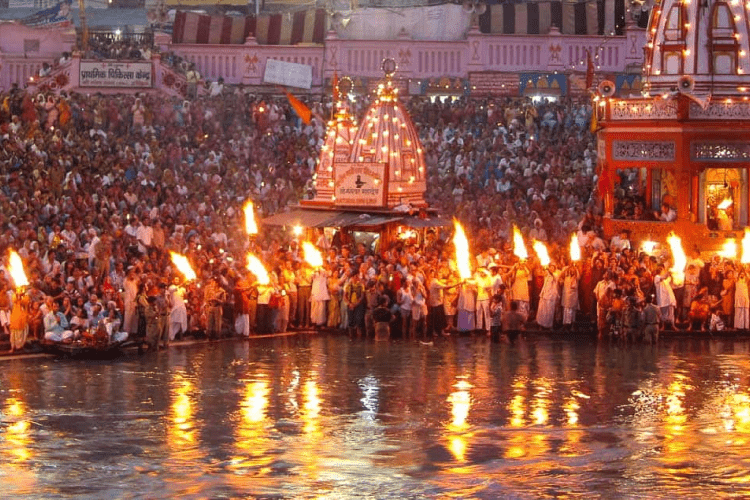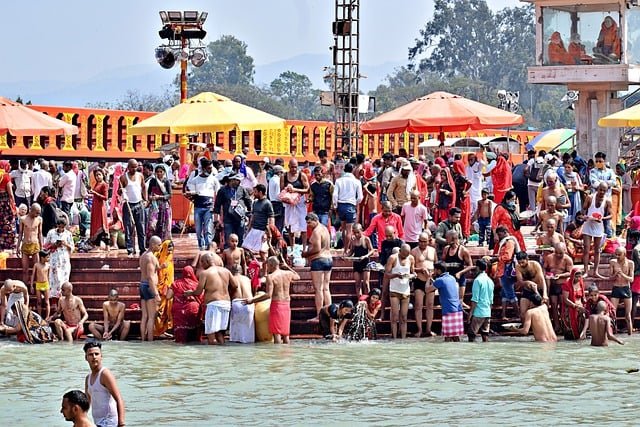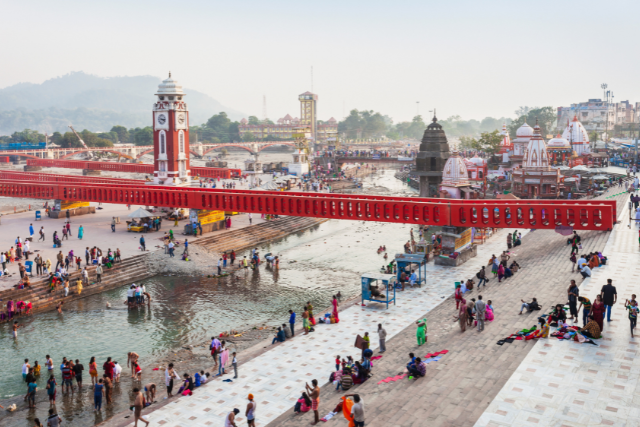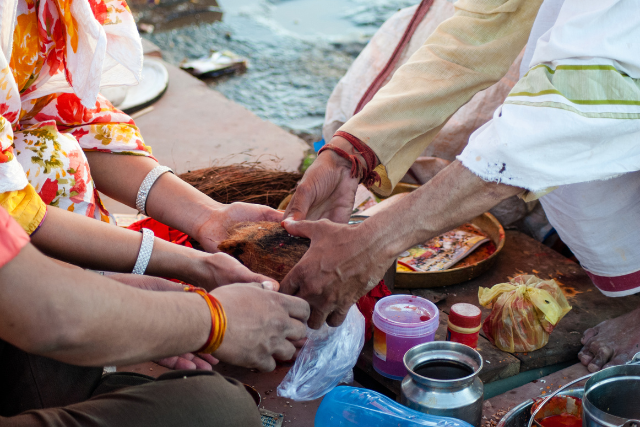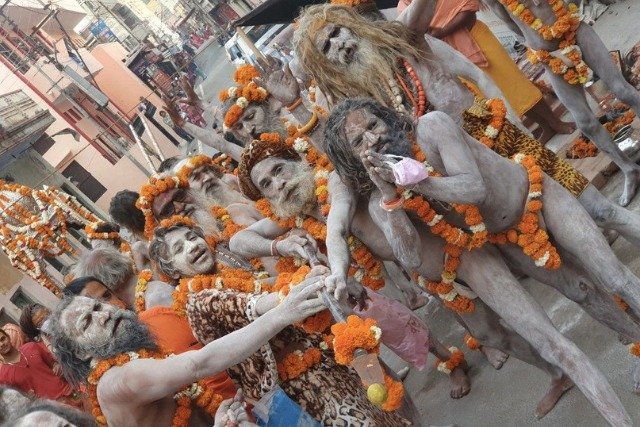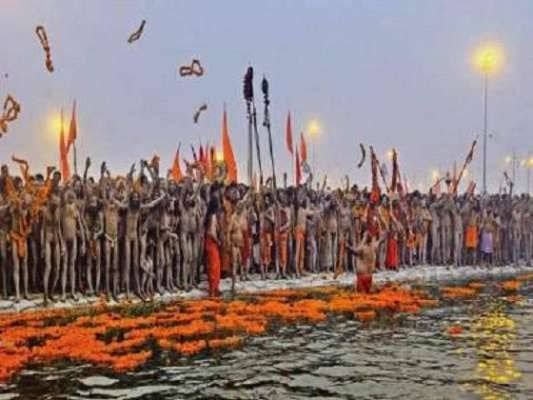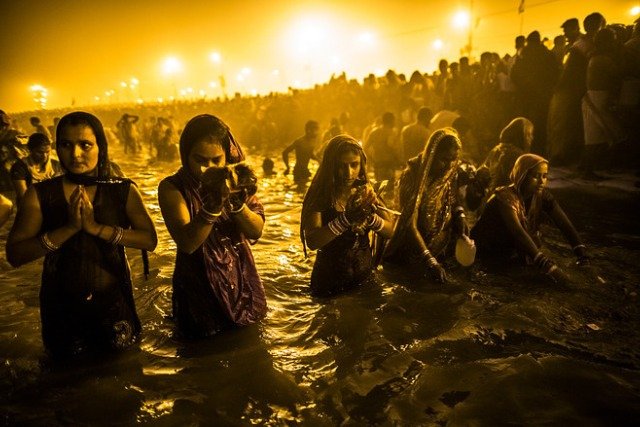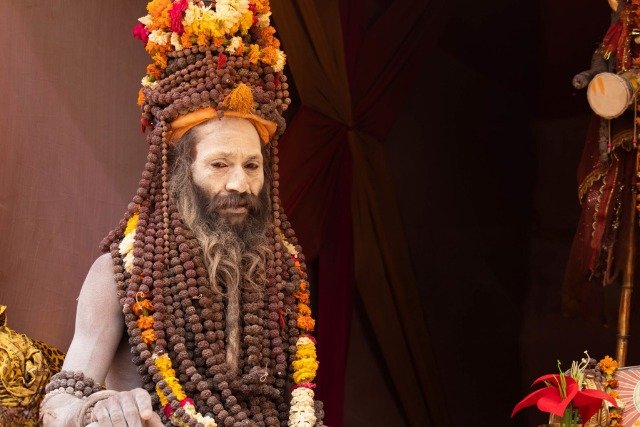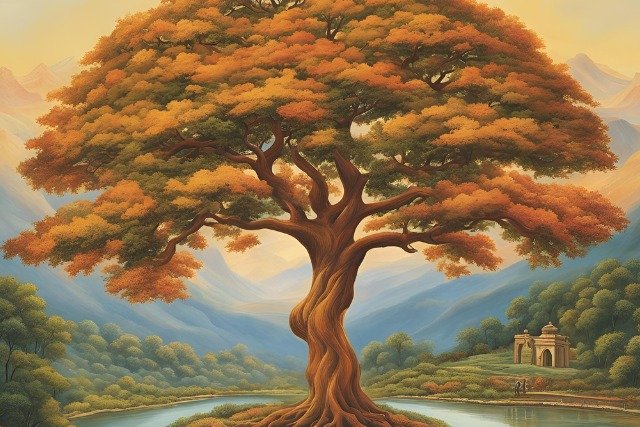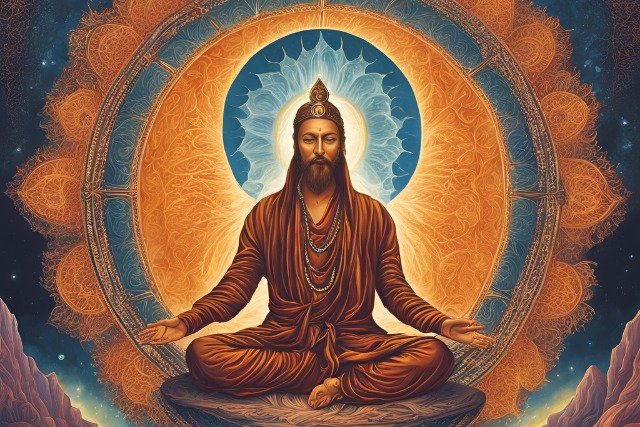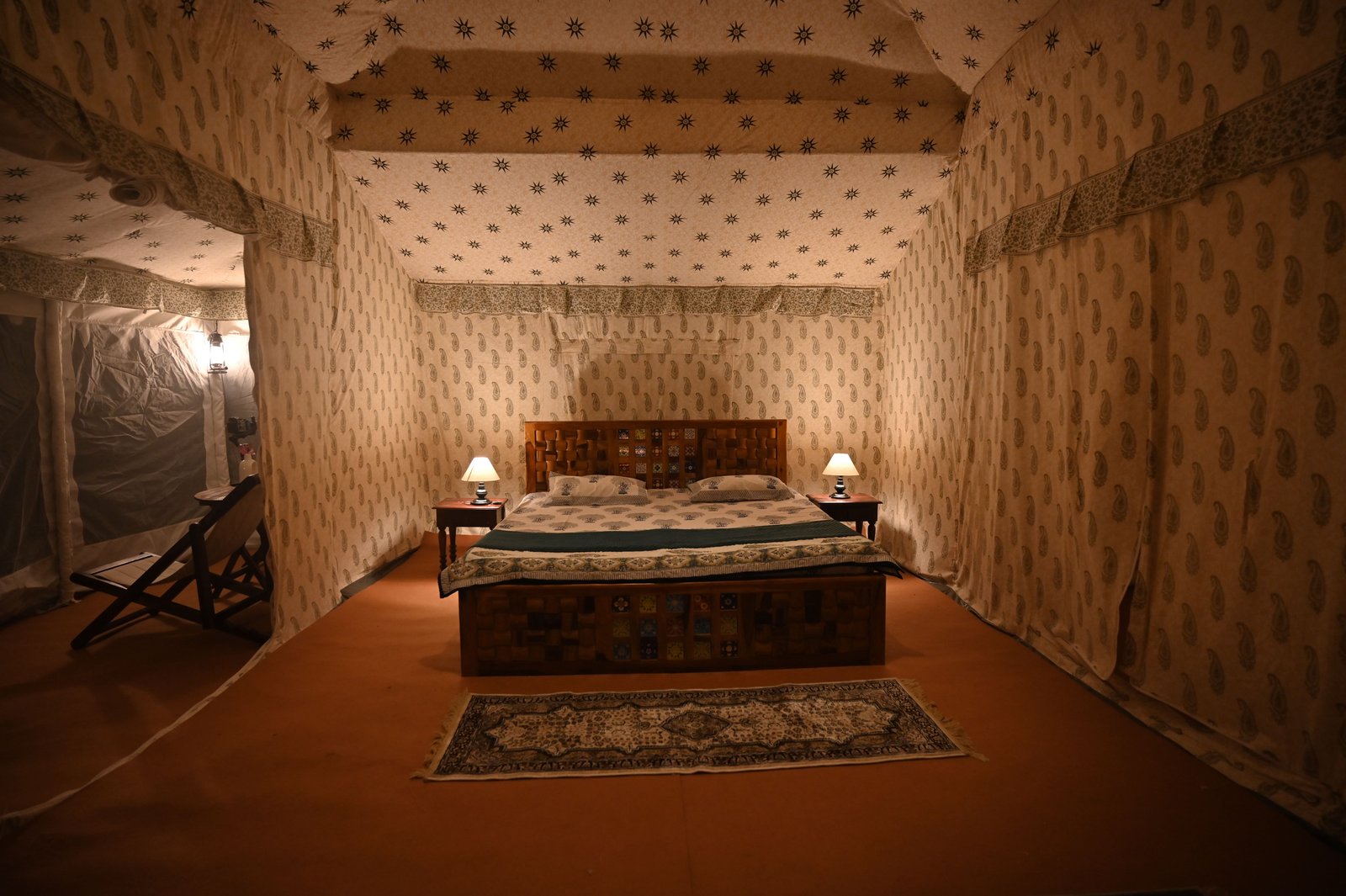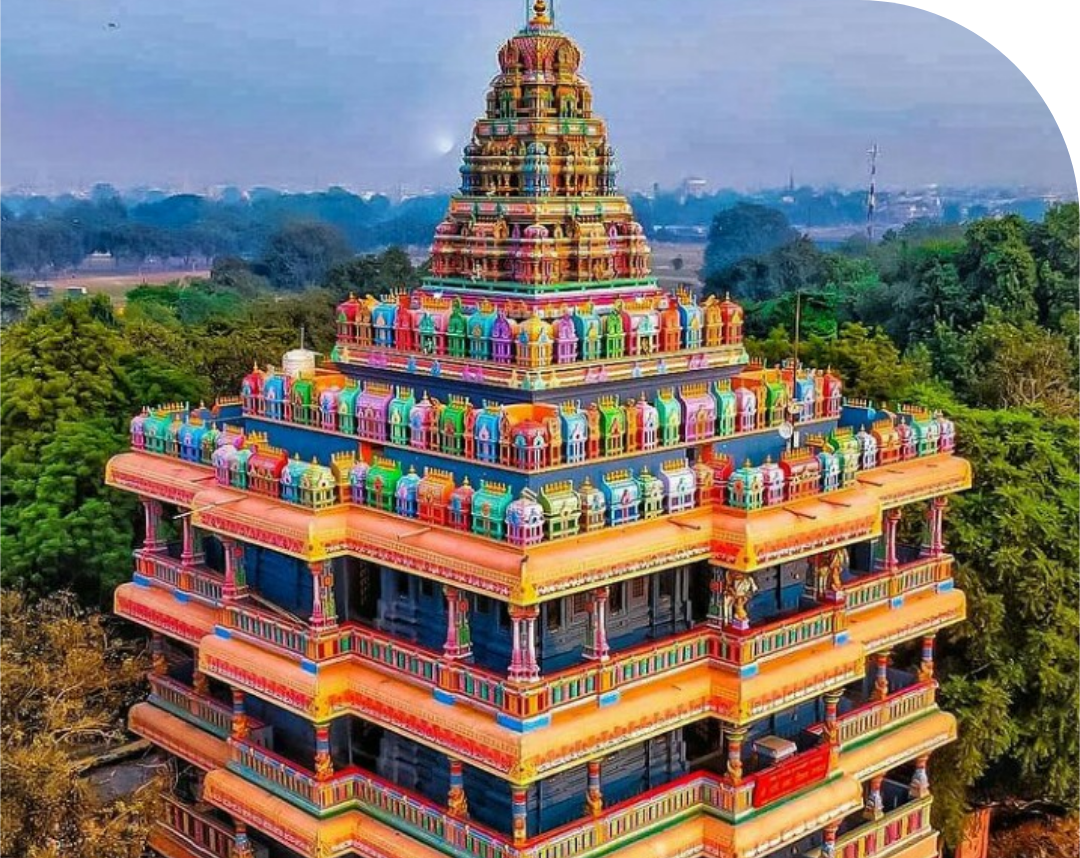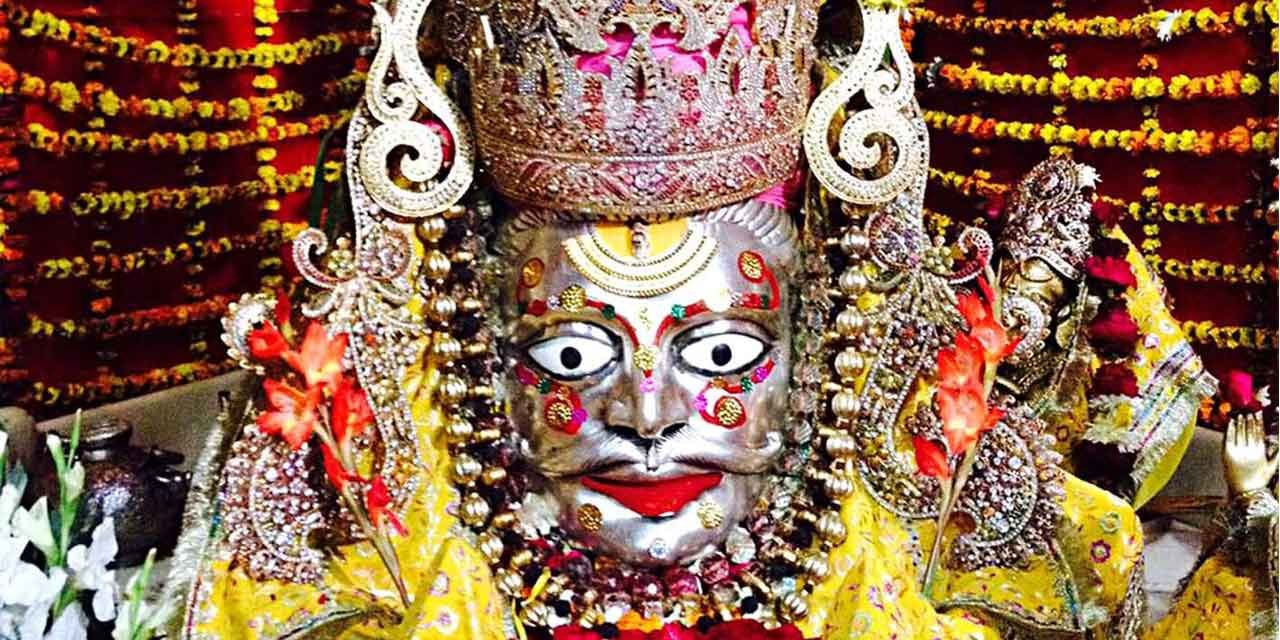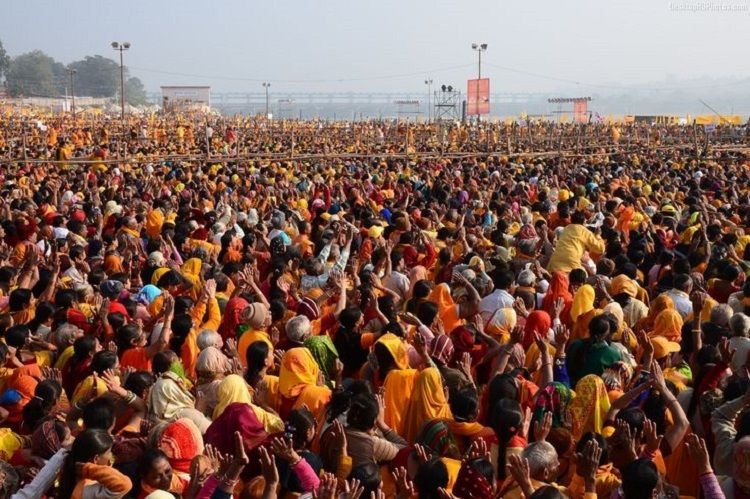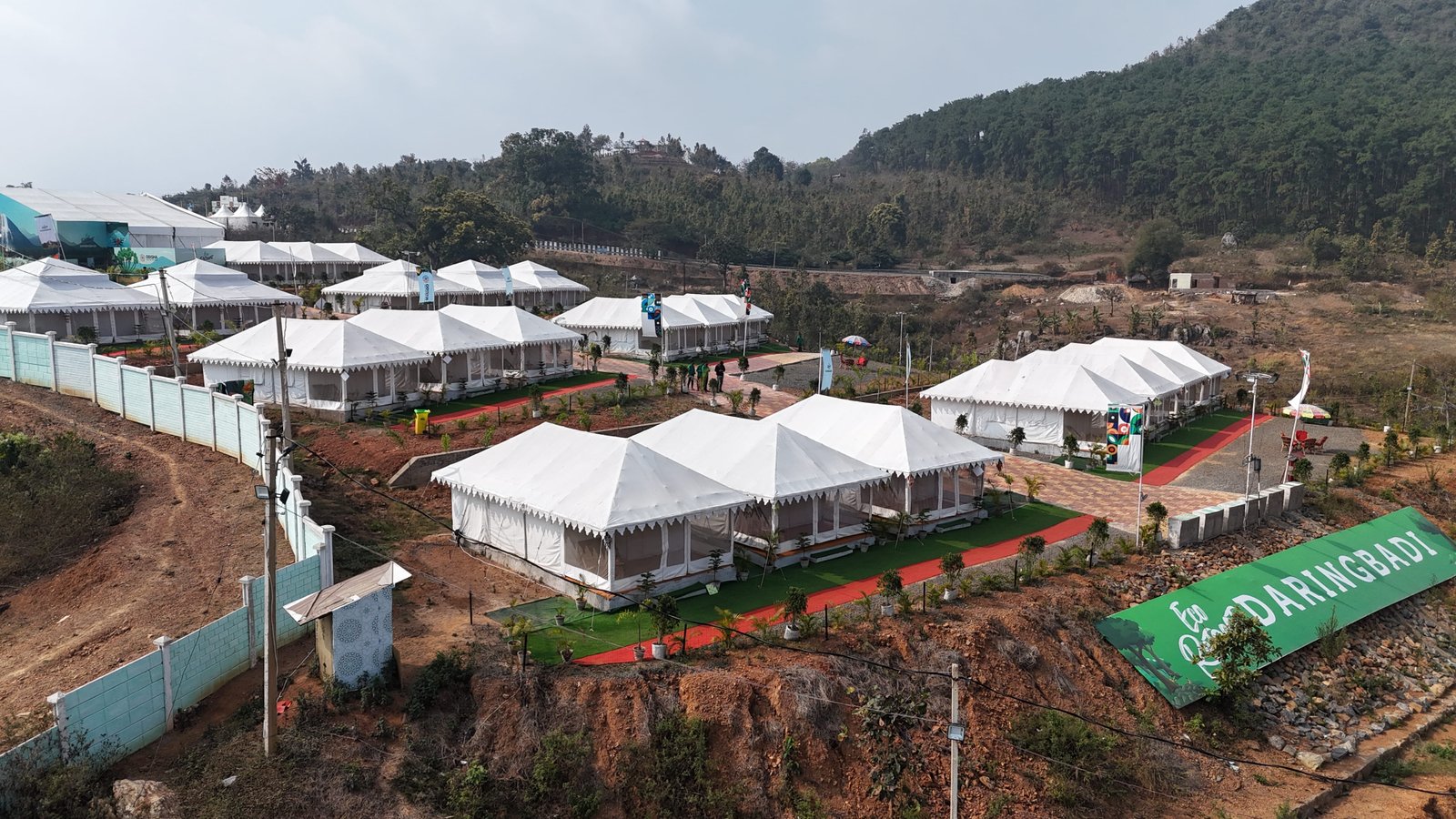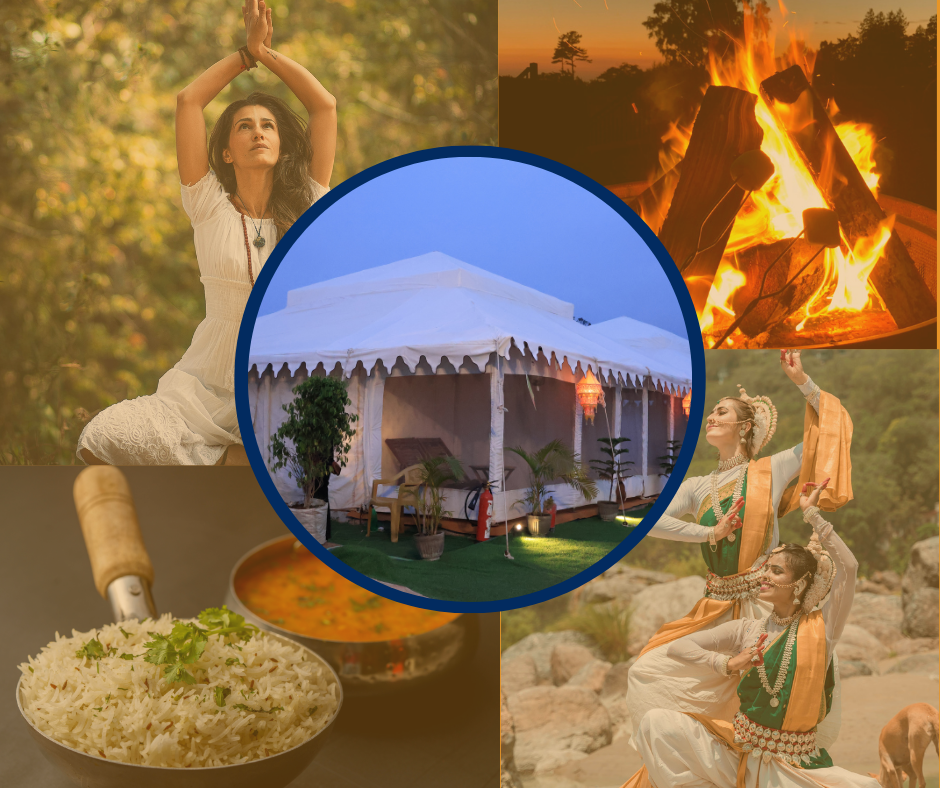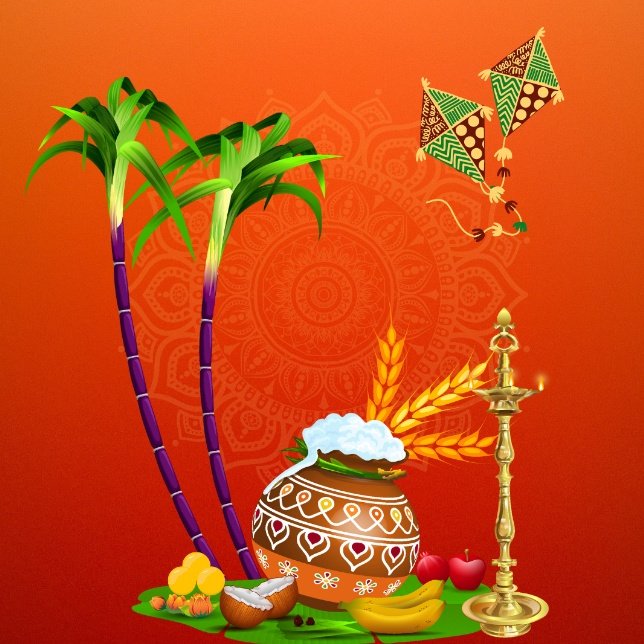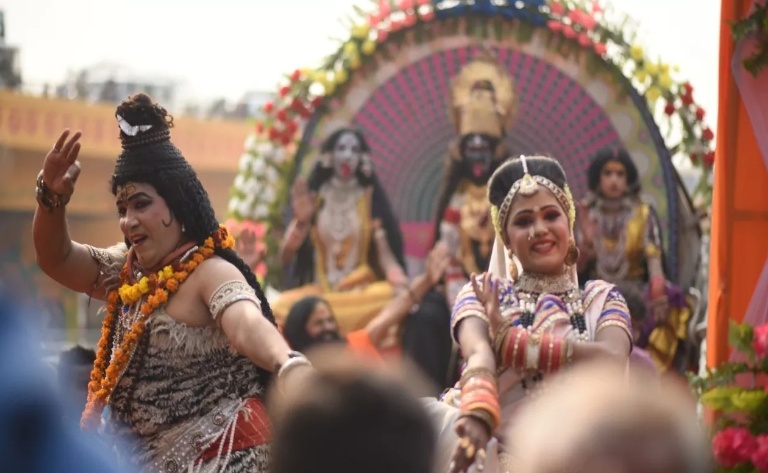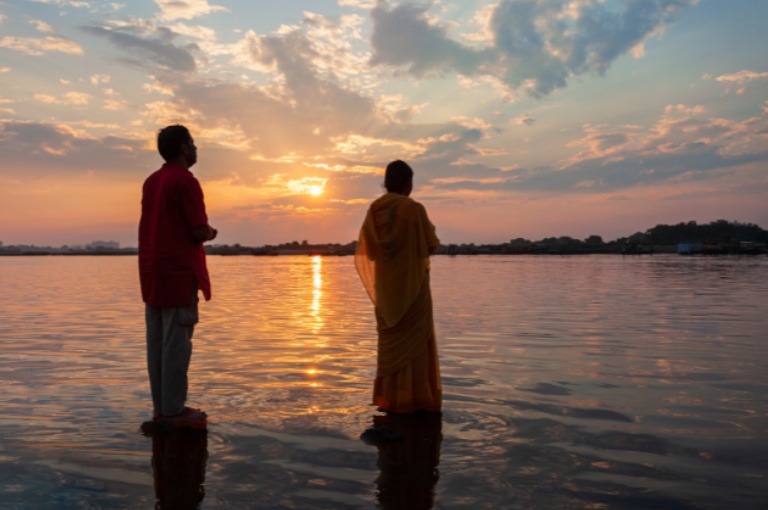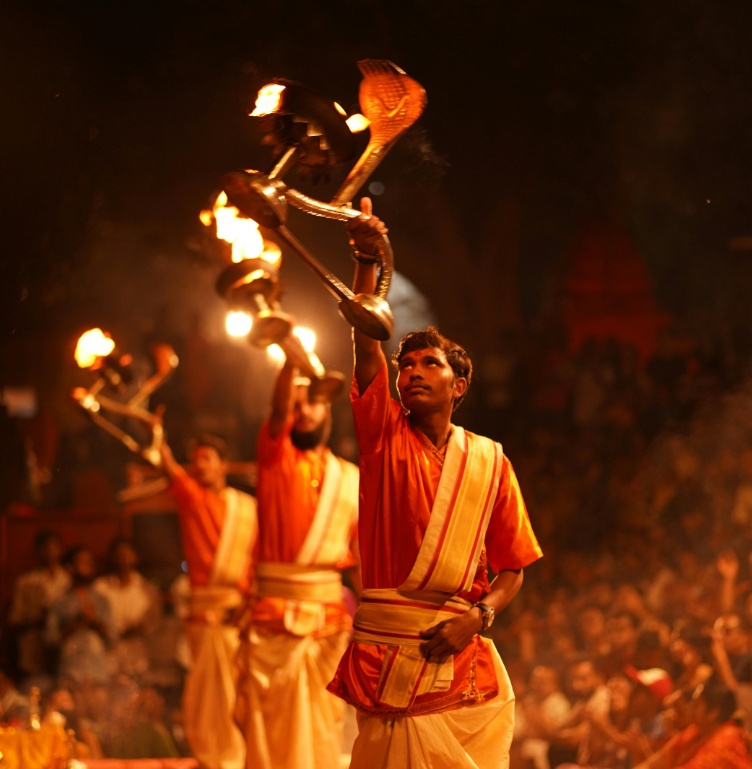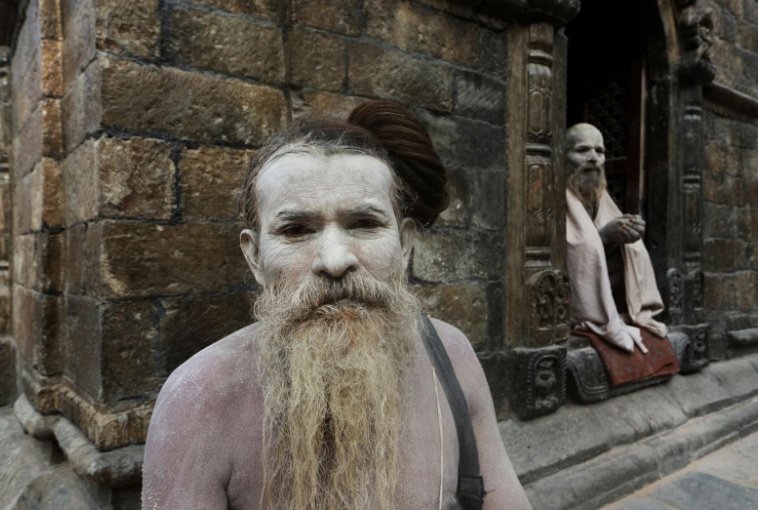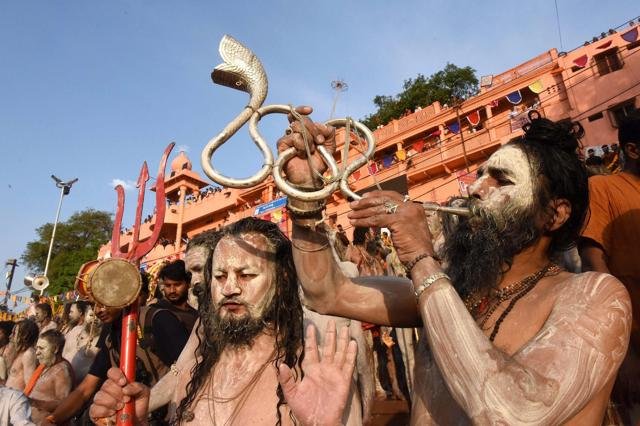
Author : Admin
The Mahakumbh Mela isn’t just a pilgrimage; it is a coming together of two worlds — one of ritual, tradition, and sanctity, and the other of faith and spirituality. Every fifth year (or, sometimes, every third), the sacred banks of the Ganges become the backdrop to a festival that happens not in individual temples or holy sites but in the open air, on the bank of the Ganges herself. With millions of devotees arriving from around the globe, there are moments in the Mela that see a congregation of ascetics. But the Akharas are at the center of it all.
The Akharas are the monastic world of Vaisnava Hinduism. The Akharas have their own histories, lineages, and practices. They are currently gearing up for a surge of activity during Kumbh that will begin at the start of the following year. At the beginning of Kumbh, there is a dazzling procession of seers and their disciples, and various akharas line up for the ritual royal bathing/shahi snan. This blog brings you closer to the significant Akharas that converge and make the Mahakumbh Mela.
Also Read: - Gayatri Pariwar
What are the Akharas of Hindu Saints?
The word itself seems to echo the sense of lineage they profess: ‘Akhada’ is made up of words that mean ‘undivided’ and ‘one of the names to invoke God’ in Sanskrit. It evokes an ‘undivided, uninterrupted, eternal tradition’ with God at heart. The Akharas were started by Adi Shankaracharya, an 8th-century spiritual leader who popularized Advaita Vedanta, or non-dualism, a school of thought in Hinduism that accepts the eventual unity of all things with the ultimate divine reality. He started the Akharas to protect the Sanatana Dharma, which teaches the eternal way of life.
Over the centuries, Akharas have become institutions through which the ancient heritage and spiritual practices are preserved, and the members serve the larger society. The Akharas are the traditional monastic orders of Hindu saints and ascetics, established for leading their lives in multifaceted disciplines:
Forming voluntary associations of sannyasis.
Preaching and practicing spiritual disciplines.
Performing social and community services.
Conducting educational functions, celebrating religious plays, and summarizing scriptural philosophies.
Also Check: - accommodation in kumbh mela
History of Akharas
Adi Shankaracharya, the founder of the twin traditions of Advaita Vedanta and infinite Shaivism and a great Hindu reformer, is believed to have founded seven Akharas. Akharas provided early armed support to Shankaracharya’s mission of spreading and strengthening Hinduism.
During long periods of subjugation of India by Muslims and, later, the British, the Akharas resorted to collective congregations and organizations at Kumbh Melas with the insistence to serve the cause of the preservation of the Hindu religion and culture. Over the years, the Akharas have evolved into spiritual communities devoted to preserving and propagating their religious tenets. Akharas form part of the ancient Hindu traditions, especially Kumbh Melas.
How Many Akharas Are There?
The Akhil Bharatiya Akhara Parishad is the governing body that manages Akhara affairs across all Kumbh Melas. At the 2021 mela, the 13-member Akhara parishad split into two groups with seven akharas – Nirmohi, Nirvani, Digamber, Mahanirvani, Atal, Bada Udasin, and Nirmal – and six akharas – Niranjani, Juna, Avahan, Anand, Agni, and Naya Udasin.
Also Check: - kumbh mela 2025 accommodation
Types of Akharas
13 akharas, seven are Shaiva, and three each are Vaishnava and Udaseen.
Shaiva Akharas
This akhara worships MahaShiva and the various forms of the Shiva like the Ardhnarishwar, which is half-shiva, and half-Parvati, and are hence called Shaiva Akaharas. The Shaiva Akhara includes
● Shri Panchayati Akhara Mahanirvani
● Shri Panch Atal Akhara
● Shri Panchayati Akhara Niranjani and
● Taponidhi Shri Anand Akhara Panchayati
Vaishnav Akhara
The Vaishnav Akhara worships lord Vishnu and includes
● Shri Nirvani and Akhada
● Shri Digambar aani Akhada
● Shri Nimrohi aani Akhada
Also Read: - Odisha Eco Rtreat
Udasin Akharas
The Udaseen Akhara was founded by Sikh Guru, Chandra Dev, who offer their prayers in the form of “Ek Omkar”. The Udaseen Akhara includes:
● Shri Panchayati Udaseen Akhada
● Shri Udasin Panchayati Naya Akhada
● Shri Nirmal Panchayati Akhada
In addition to these 13, there is now also the Kinnar Akhara, one of the akharas representing the transgender community, which has been formally recognized at the Kumbh Mela in recent years. Each of them has its unique traditions and practices. All of these akharas also diverge into three primary groups: Shaiva (worshippers of Lord Shiva), Vaishnava (worshippers of Lord Vishnu), and Udasi (followers of Guru Nanak). Each akhara has a large footprint at the Kumbh Mela, and each conducts distinctive rituals and has their way of life.
Also Check: - Tips for First Time Visitors for Kumbh Mela
The Major Akharas of Kumbh Mela
Hinduism ranges across a vast gamut of ideas and practices, and so too do themembers of the Akharas who take part in the Maha Kumbh Mela. Here’s a glimpse of some:
Juna AkharaThe strongest, and the largest Akhara, is Juna Akhara, followed by Niranjani and Mahanirvani Akharas. The Juna Akhara is generally the largest and the most important of the akharas. It has both a strong history and a massive following. One will yieldsignificant numbers at a Kumbh Mela, swarming with the ascetics and scholars of the ascetic/scholarly tradition. The Juna Akhara tends to be the most extravagant with massive processions and the largest participation of Naga Sadhus.
Naga Akhara
Of all the thousands of sadhus who flock to the Kumbh Mela, the most spectacular and best-known are the Naga Akhara, stripped to the waist and covered in ash. Wielding weapons, they stand as an echo of a warrior lineage, or indeed an extension of one; inHindu mythology, this warrior sect fought against the demon-kin of Ravana in the battle for an elixir of eternal life. When they make their processions, called Shahi Snan, they attract huge crowds and symbolize the historical leadership that the sect has enjoyed over the years.
Also Check: - Mauni Amavasya
Niranjani Akhara
The most traditional, and arguably the most learned Akhara is the 7th-century Niranjani Akhara, with a heavy emphasis placed on their dharma (spirituality) and darshan (intellectual) pursuits. Many akharvirendras (heads of Akharas) are scholars in their ownright and respected academic contributors to Hindu philosophy and theology.
Vaishnav Akhara
The Vaishnav Akhara is devoted to the worship of Lord Vishnu and his avatars.Devotional sadhanas form an important part of this Akhara’s daily rituals, consisting of a daily schedule of bhajans (devotional songs) and kirtans (chanting). This Akhara may,for this reason, give off a more vibrant and joyful vibe.
Mahanirvani Akhara
Another one of the Akharas is the Mahanirvani Akhara, formed over a thousand years ago, which emphasizes the unity of spiritual knowledge and physical discipline. It enjoys considerable preeminence in the conduct of the Kumbh Mela, often serving as the principal bureaucratic fixture of the once-in-12-year pilgrimage festival. Members of this Akhara are considered spiritual savants whose lives are guided by rigorous discipline.
Also Read: -
Spiritual Majesty of Juna Akhara
Kinnar AkharaKinnar Akhara is one of several minor Akharas, established only recently. Made up of transgender people, it represents perhaps the most dramatic change in the Akhara landscape in emphasizing inclusion and spiritual equality. Gathering in the land of saints at the Kumbh must be recognized for the progress it represents: a Hindu religious landscape with a greater degree of acceptance and respect for humanity’s diversity of identities.
The Mela’s Akharas articulate a broader diversity of Hinduism traditions and practices. Across these and other Akharas of the Mahakumbh Mela, there is evidence to suggest that this diversity of Hinduism has been a constitutive factor in their organic self-renewal as well as for the Mela attendees through the millennia. Pilgrims to Prayagraj, as you prepare for the 2025 Mahakumbh Mela, seek out and immerse yourselves in these monastic orders.
Experience the guide service in kumbh mela with Eracamp Tents
With Ercamps, you can enhance your spiritual journey. We offer luxurious tents with no compromise on present-day luxuries that still bring back the old-world charm and experience of the Maha Kumbh Mela. For more information and inquiries on how to book comfortable tents with Eracamps,
